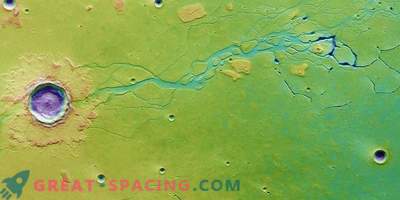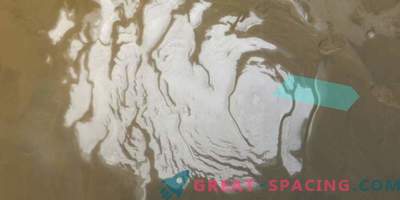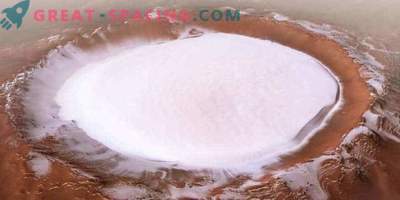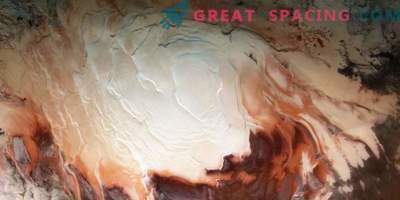
The image shows the distribution of surface ice at the south (left) and north (right) poles of the moon. Blue displays areas of ice deposited on the image of the lunar surface. The gray scale corresponds to the surface temperature (the darker the colder). Ice is concentrated in the most frosty places - shadows of craters
In the darkest and frosty parts of the polar regions, scientists were able to find evidence of the presence of water ice on the lunar surface. These ice deposits "multiply" and can be ancient. At the south pole, most of the ice is concentrated in lunar craters, and the ice of the north pole is wider, but diffusely distributed. Scientists used data from a NASA M3 device to determine three specific signatures that prove the presence of ice on the surface of an earth satellite.
The M3 is aboard the Chandrayaan-1 probe launched by India in 2008. The device was able to collect data that not only took on reflective properties, but was also able to directly measure the method of absorption of molecules by IR light, which allows us to distinguish liquid water or steam from solid ice. Most of the water ice is in the shadow of craters near the poles, where the warmest temperatures never exceed -250 degrees Fahrenheit. Due to the extremely small inclination of the axial rotation of the moon, sunlight never falls on these areas. Previous observations indirectly revealed possible signs of surface ice at the lunar south pole, but this could be explained by other phenomena, such as the satellite’s high reflective soil level. With enough ice, you can get water as a resource for future expeditions and the colonization of the moon.
It is also important to get more information about the characteristics of ice, its origin and interaction with the lunar environment. NASA plans to make this its key focus, as we strive to return to actively exploring the nearest space neighbor.











































